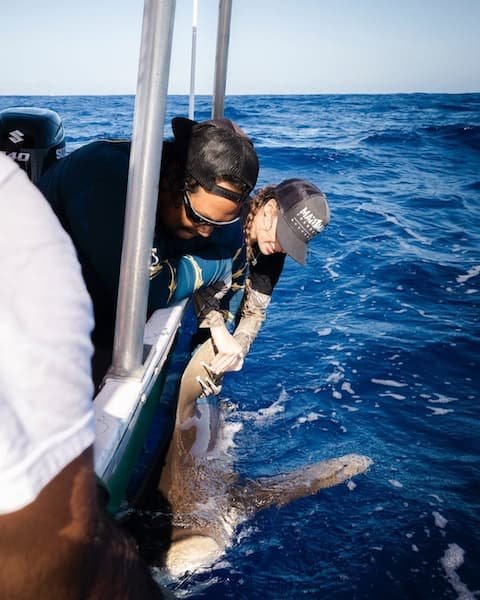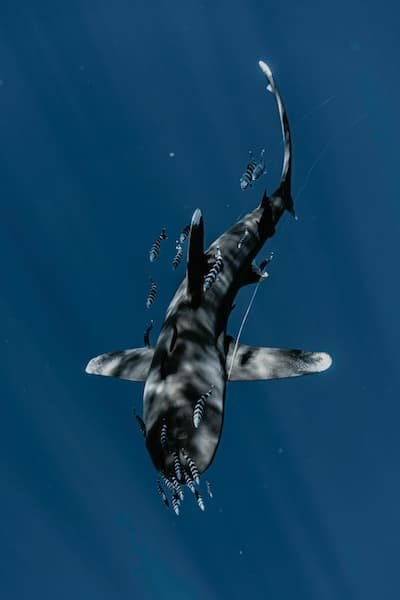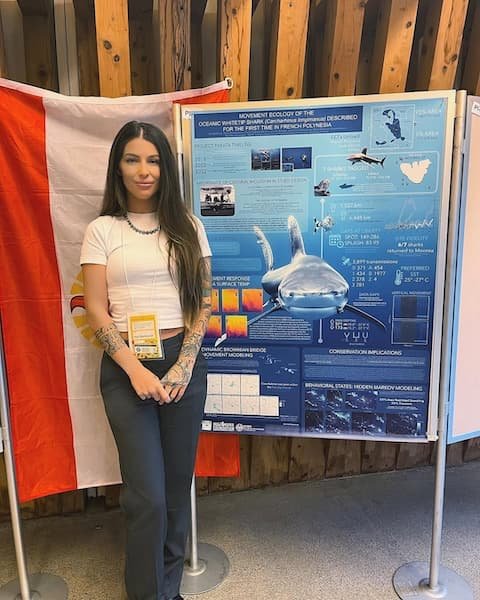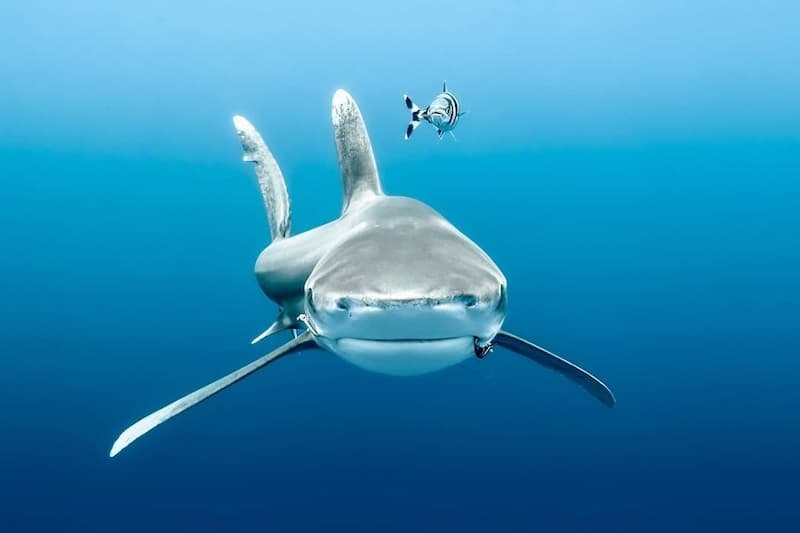
 Olivia Møller
Freediver - Activist - Explorer
Olivia Møller
Freediver - Activist - Explorer

 Olivia Møller
Freediver - Activist - Explorer
Olivia Møller
Freediver - Activist - Explorer
Research is the foundation of human progress. From the microscopic realm of biology to the vast expanse of space, every major advancement stems from the meticulous work of scientists who dedicate their lives to answering the unknown. It is through research papers—thoroughly vetted, peer-reviewed documents—that knowledge is formally introduced to the world, enabling future breakthroughs. Whether it’s in medicine, environmental science, or engineering, research has continuously pushed humanity forward, turning observations into tangible solutions.
In marine science, research plays an especially crucial role. The ocean, covering over 70% of our planet, remains one of the least explored frontiers. The species that inhabit its depths often elude our understanding, yet their survival—and ours—is intricately linked. Among these enigmatic creatures is the oceanic whitetip shark (Carcharhinus longimanus), a species that has long been overshadowed by more famous sharks but is, in many ways, just as important.
Recently, a team of researchers—including Kori Burkhardt, Yannis P. Papastamatiou, Pierrick Seybald, Ofe Pere, Jean Luc Ramage, Iotua Tiarii, Teikinui Tixier, Olivier Heitaurari, and Vincent Lecours—took a significant step in shedding light on this species. Their study, Horizontal and Vertical Movement Ecology of the Oceanic Whitetip Shark in French Polynesia, offers a rare glimpse into the movements and behaviors of this critically endangered predator. Some members of the team are associated with the Maomana Foundation, an organization dedicated to ocean conservation and research.
The oceanic whitetip shark is an apex predator with a global distribution, yet it remains one of the most understudied shark species. Its populations have plummeted due to overfishing and bycatch, with the species now classified as critically endangered by the IUCN. Despite this, major knowledge gaps persist regarding its behavior, movement, and habitat use—critical information for its conservation.
The study conducted in French Polynesia sought to fill some of these gaps. By tagging seven mature oceanic whitetip sharks with fin-mounted satellite trackers (SPOT/SPLASH), researchers monitored their horizontal and vertical movements over a period ranging from 83 to 286 days. The results were eye-opening.
These sharks traveled distances between 1,625 and 7,885 kilometers, covering an area of 1,467,157 square kilometers. Their range spanned across three exclusive economic zones—French Polynesia, Kiribati, and the Cook Islands—as well as unmanaged international waters. However, despite this vast roaming range, the study identified a core area of 176,635 square kilometers centered around the Society Islands.
Interestingly, researchers noted two distinct movement behaviors. Through the use of a two-state Hidden Markov Model, they were able to differentiate between transient movement (66% of tracked activity) and area-restricted searching (34%). This suggested that while oceanic whitetips are largely pelagic, they exhibit a tendency to become residential near islands, seamounts, and bathymetric ridges—potentially due to food availability or other ecological factors. The study also highlighted how thermal barriers, particularly sea surface temperatures below 26°C, influenced their horizontal movement.
Perhaps the most surprising discovery was the evidence of site fidelity in this species. Five out of the seven tagged sharks returned to Moorea at some point during the study, challenging the long-standing assumption that oceanic whitetips are purely nomadic. This new insight into their movement patterns provides crucial information that can guide conservation strategies, particularly in areas where human activity threatens their survival.

Scientific discoveries do not exist in isolation; they are often deeply intertwined with the cultures and communities in which they take place. The oceanic whitetip shark, known as "te parata" in Tahitian, holds deep cultural significance in French Polynesia. This study was more than just a scientific endeavor—it was a collaborative effort involving local communities, government authorities, and marine conservation organizations.
As the researchers noted in their announcement of the study, “It has been a great honor having the trust of our government and community to handle and research a species deeply intertwined within Tahitian culture and legend.”
Such partnerships between scientists and local stakeholders are essential. They ensure that research is not only conducted ethically but also benefits the communities that rely on these ecosystems. By incorporating traditional knowledge and engaging local populations in conservation efforts, studies like this one have a far greater impact than science alone ever could.

For critically endangered species like the oceanic whitetip shark, research is often the first step toward meaningful conservation action. Without data, there is no way to develop effective management strategies. This study provides a much-needed foundation for future conservation efforts, particularly in French Polynesia, which has already designated itself as a shark sanctuary.
The findings reinforce the importance of marine protected areas (MPAs) and highlight the need for broader international cooperation in protecting highly migratory species. Given that these sharks cross multiple economic zones and international waters, conservation policies must extend beyond a single country’s jurisdiction.
Additionally, the study underscores the need for stricter regulations on commercial fishing practices, especially bycatch mitigation. Many oceanic whitetips fall victim to longline and purse seine fisheries, where they are caught unintentionally but fatally. Data from this research could support policy changes that enforce safer fishing methods or stricter quotas in key areas of the South Pacific.

At Alchemy, we recognize that ocean conservation is not just a responsibility—it’s a necessity. As a company deeply rooted in freediving and marine exploration, we are committed to supporting organizations that work toward a better future for our oceans. That’s why we are proud to support the Maomana Foundation, one of the key organizations involved in this groundbreaking research on the oceanic whitetip shark.
Maomana’s work extends beyond just research. They are dedicated to marine conservation, education, and community involvement, ensuring that future generations inherit a thriving ocean ecosystem. Through our partnership, we aim to contribute to their ongoing efforts to protect marine life, raise awareness, and inspire action.

The study of the oceanic whitetip shark in French Polynesia is a powerful reminder of why research matters. It is through studies like this that we begin to understand the complex behaviors of marine species, allowing us to take informed steps toward their protection.
But science is only part of the equation. Conservation requires a multi-faceted approach—one that includes research, community engagement, cultural respect, and corporate responsibility. As freedivers, ocean lovers, and stewards of the sea, we must all play our part in ensuring that species like the oceanic whitetip continue to roam the vast blue for generations to come.